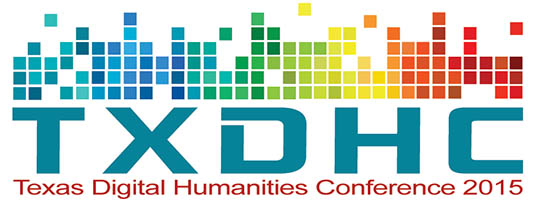Document Type
Presentation
Abstract
The history of Houston, Texas chronicles the growth of a city from settlement by native peoples and diverse colonists to its present status as the fourth largest and most diverse city in the United States. The collections of the Houston Public Library provide documentary evidence of Houston’s history from before its founding in 1836 to present day and include approximately 4 million photographs, 150,000 architectural drawings, and numerous other fascinating archival materials. In 2014, the Houston Public Library was awarded a grant from the Texas State Library and Archives Commission to create an interactive GIS website that will display 1,000 historically significant geocoded points representing significant landmarks and events in Houston’s history. Many of these points will be collected from material that has already been digitized through the Houston Area Digital Archives, http://digital.houstonlibrary.org/, while other data will be gathered from newly investigated archival material and community researchers. Some of the material gathered from community researchers concerns the history of Houston’s Montrose neighborhood and how it came to be identified with lesbian, gay, bisexual, and transgender (LGBT) communities. The Omeka-driven platform can be used to combine archived LGBT publication print ads, photographs, oral histories, and contemporaneous popular press articles to produce a temporally sensitive map of how different Houstonians have imagined LGBT space in their city over time. Archives in Houston and elsewhere hold lesbian and gay publications from the 1950s and 1960s containing advertising for a number of businesses located in present day Downtown and Midtown. By the mid 1970s, similar archival sources show that the geographic focus of those businesses had shifted to the Montrose area. Further, the platform allows for deep storytelling of particular locations, such as the iconic bar Mary’s, now the site of an upscale coffee shop in Montrose. By bringing specific communities’ collections of materials to public light, the Houston Public Library’s interactive GIS map gives users a powerful tool to re-imagine diverse histories of the city in relation to physical space over time. This project represents a significant collaborative effort between staff of the Houston Public Library, the City of Houston GIS team, and community researchers. Unique to this collaborative GIS effort are the digital enhancements that will include online exhibitions created with Omeka. The authors will present the innovative methods used to create this GIS project and demonstrate some exciting applications of the Omeka platform through the Montrose-related materials.
Disciplines
Arts and Humanities | Digital Humanities
Publication Date
4-10-2015
Language
English
License

This work is licensed under a Creative Commons Attribution-NonCommercial-Share Alike 4.0 International License.
Recommended Citation
Sewell, Jeanette Claire and Riedel, Brian Scott, "Local History, Civic Visibility: GIS, the Humanities, and Public-Private Collaboration" (2015). Texas Digital Humanities Conference 2015. 3.
https://mavmatrix.uta.edu/digitalhumanities_conf2015/3

